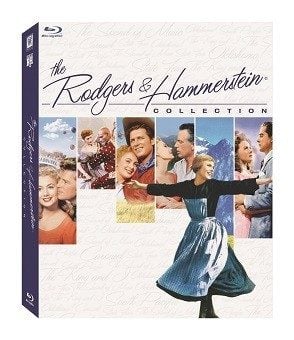Richard Rodgers and Oscar Hammerstein II first collaborated on a single song in 1920 for a Columbia (University) Varsity Show, but their partnership didn’t really come to fruition until 1943 when Rodgers’ usual partner Lorenz Hart declined to work on the bucolic-themed musical version of Green Grow the Lilacs and Rodgers asked Hammerstein to work with him. After the explosion that was Oklahoma! the team did one more project apiece apart (a revival of A Connecticut Yankee for Rodgers, Carmen Jones for Hammerstein), and then they remained musical partners until Hammerstein’s death in 1960. The Rodgers and Hammerstein Collection gathers together six of their most popular works in their filmed versions: the 1945 State Fair, Oklahoma!, Carousel, The King and I, South Pacific, and The Sound of Music (the latter two already previously released on Blu-ray). The movies are all special occasions for lovers of musicals, but the transfers may not leave everyone completely enchanted.

Studio: Fox
Distributed By: N/A
Video Resolution and Encode: 1080P/AVC, 1080I/AVC
Aspect Ratio: 1.33:1, 2.20:1, 2.55:1
Audio: English 2.0 DD, English 4.0 DTS-HDMA, English 5.1 DTS-HDMA, English 7.1 DTS-HDMA, Other
Subtitles: English SDH, Other
Rating: Not Rated, G
Run Time: 14 Hr. 1 Min.
Package Includes: Blu-ray
keep case with leaves in a slipcaseDisc Type: BD50 (dual layer)
Region: A
Release Date: 05/06/2014
MSRP: $199.99
The Production Rating: 4.5/5
Video Rating: 4/5 3D Rating: NA
Audio Rating: 4.5/5
Special Features Rating: 4.5/5
Overall Rating: 4.5/5
Reviewed By: Matt Hough
Support HTF when you buy this title:





